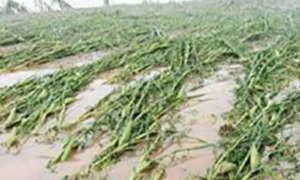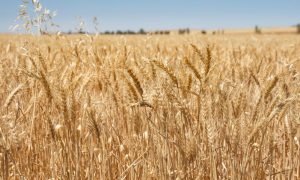New wheat breeding paradigms for a warming climate

Plant breeding has been successful in adapting crops worldwide with one of the latest challenges being adaption to warmer days and nights. Taking wheat as a case study, here we show current elite nurseries express a range of levels of heat adaptation. Generally, the higher the selection ratio for yield response under warming, the less stable the yield response across environments. Specifically, less than one-third of genotypes trialled adapted well to the 0.26 °C warming of the last decade, and the phenotypes were stable in only 26% of environments. With continued warming, selection ratio falls 8.5% and stability falls 8.7% for each 1 °C increase in local temperature. Overall, faced with more climate variability, breeders need to revisit their breeding strategies to integrate genetic diversity that confers climate resilience without penalties to productivity in favourable seasons.
Plant breeding has been successful in adapting crops worldwide with one of the latest challenges being adaption to warmer days and nights. Taking wheat as a case study, here we show current elite nurseries express a range of levels of heat adaptation. Generally, the higher the selection ratio for yield response under warming, the less stable the yield response across environments. Specifically, less than one-third of genotypes trialled adapted well to the 0.26 °C warming of the last decade, and the phenotypes were stable in only 26% of environments. With continued warming, selection ratio falls 8.5% and stability falls 8.7% for each 1 °C increase in local temperature. Overall, faced with more climate variability, breeders need to revisit their breeding strategies to integrate genetic diversity that confers climate resilience without penalties to productivity in favourable seasons.
Source Link : https://www.nature.com/articles/s41558-024-02069-0

















